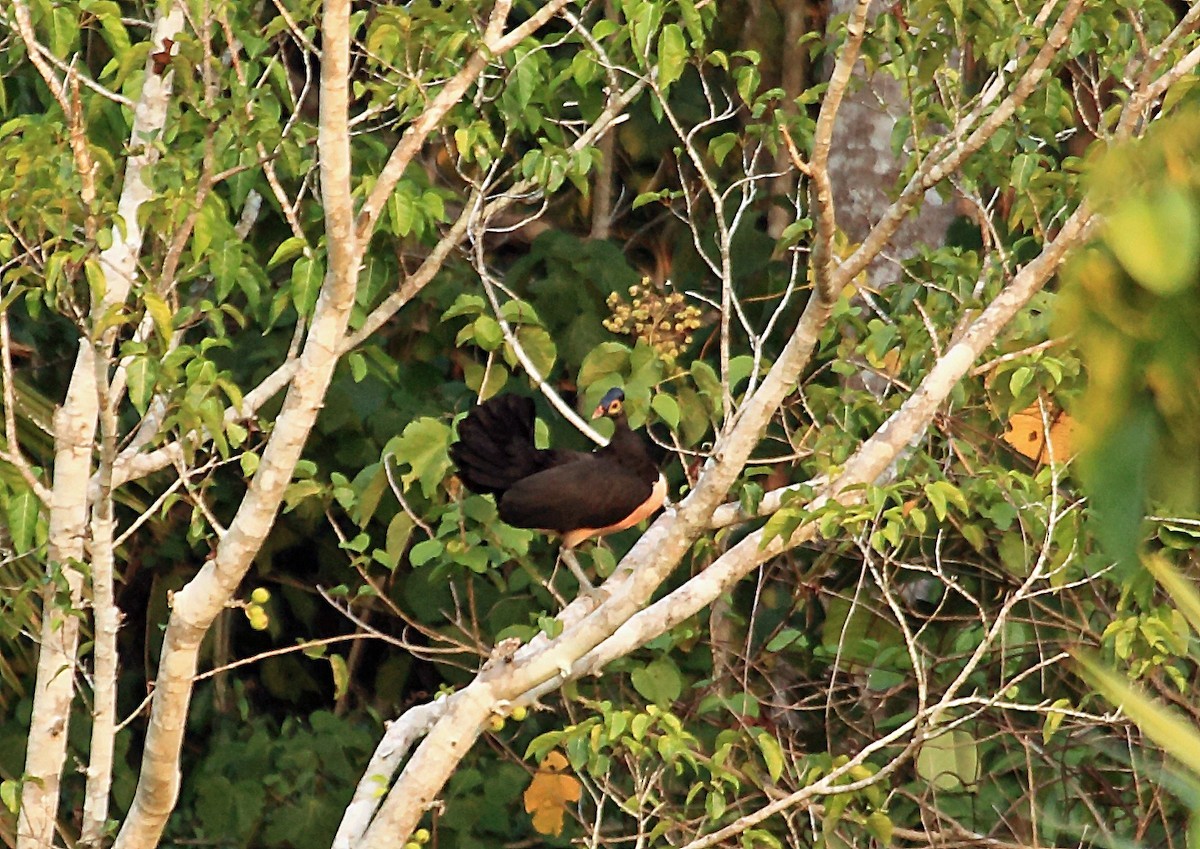Maleo
A species of Maleo Scientific name : Macrocephalon maleo Genus : Maleo
Maleo, A species of Maleo
Botanical name: Macrocephalon maleo
Genus: Maleo
Content
Description General Info
 Photo By Nigel Voaden
Photo By Nigel Voaden Description
The maleo ranges from 55–60 cm (22–24 in) long with blackish plumage, bare yellow facial skin, reddish-brown iris, reddish-orange beak, and rosy salmon underparts. The crown is ornamented with a prominent, bony, dark casque - which is the origin of its genus name Macrocephalon (Macro meaning "large" and cephalon meaning "head"). The greyish blue feet have four long sharp claws, separated by a membranous web. The sexes are almost identical with a slightly smaller and duller female. Juvenile birds have largely brownish and paler heads with short blackish-brown crests and browner upperparts. 
Size
55 cm
Nest Placement
Ground
Feeding Habits
Maleo's diet consists of fallen fruits like Pangium edule, seeds, and various invertebrates including beetles, ants, and snails. This bird forages primarily on the ground, showcasing specialized feeding habits unique to its diet.
Habitat
Maleo predominantly inhabits lowland and hill forests, generally not venturing above 1,000 meters in elevation. These birds favor ecosystems with sandy substrates, such as river banks, lakeshores, and coastal regions, where they roost in trees and can be found at varying heights. Crucial to their reproduction, maleo selects geothermal or solar-heated sandy locations for nesting due to the warmth necessary for incubation. Breeding sites include mangrove-backed beaches or clearings within forests, and even black sand shores of inland lakes, reflecting their adaptability within their habitat range.
Dite type
Omnivorous
General Info
Feeding Habits
Bird food type
Behavior
The maleo's egg is large, about five times as large as that of the domestic chicken's. The female lays and covers each egg in a deep hole in the sand and allows the incubation to take place through solar or volcanic heating. After the eggs hatch, the young birds work their way up through the sand and hide in the forest. The young birds are able to fly and are totally independent. They must find food and defend themselves from predators such as monitor lizards, reticulated pythons, wild pigs, and cats. The maleo is monogamous and members of a pair stay close to each other all the time. Its diet consists mainly of fruits, seeds, mollusks, ants, termites, beetles, and other small invertebrates. 
Species Status
A large number of former nesting sites have been abandoned as a result of egg poaching and land conversion to agriculture. Of the 142 known nesting grounds, only 4 are currently considered non-threatened. The shrinking and fragmentation of forest habitats on the island pose serious threats to the surviving and future populations of the species. Wildfires in 2000 and 2004 cleared large areas of forest and what grew as a result of these fires was not a suitable habitat for the maleo. There has also been increasing isolation between non-breeding habitats and coastal breeding grounds as a result of human urban development. Because of this, mortality risk associated with moving to breeding grounds has drastically increased. Since 1972, this species has been protected by the Indonesian government. As of 2005, it is estimated that only 4,000-7,000 breeding pairs currently exist in the wild and these numbers are rapidly declining. Due to aforementioned threats, current population numbers, and deemed value of the species, the maleo is evaluated as Endangered on the IUCN Red List of Threatened Species. It is listed on Appendix I of CITES. In 2009, US-based Wildlife Conservation Society worked with local government to purchase 36 acres (150,000 m) of Indonesian beach front property where approximately 40 nests are located in an effort to further conservation efforts and protect this bird. Thanks to Alana O'Sullivan, a Senior Keeper of Ornithology, the Bronx Zoo is the only place in the world where the maleo exists outside of Indonesia and breeding efforts are currently taking place there as well. A breeding pair of maleos at the Bronx Zoo were featured in an episode of the Animal Planet show The Zoo. O'Sullivan appeared and talked about the species and the threats they face. She also lamented that most people don't know they exist. Details about the maleo not yet mentioned include having an elaborate courtship ritual and loving peanuts. It's easy to tell when the female will lay her egg because she will lose interest in everything else, including peanuts, and at that point the keepers know she will lay her egg within the next 24 hours. The Alliance for Tompotika Conservation works with communities in Sulawesi to educate locals about the maleo's endangered status and prevent the harvesting of eggs. The eggs are not a staple food source, but are a popular delicacy. 

 Photo By Nigel Voaden
Photo By Nigel Voaden